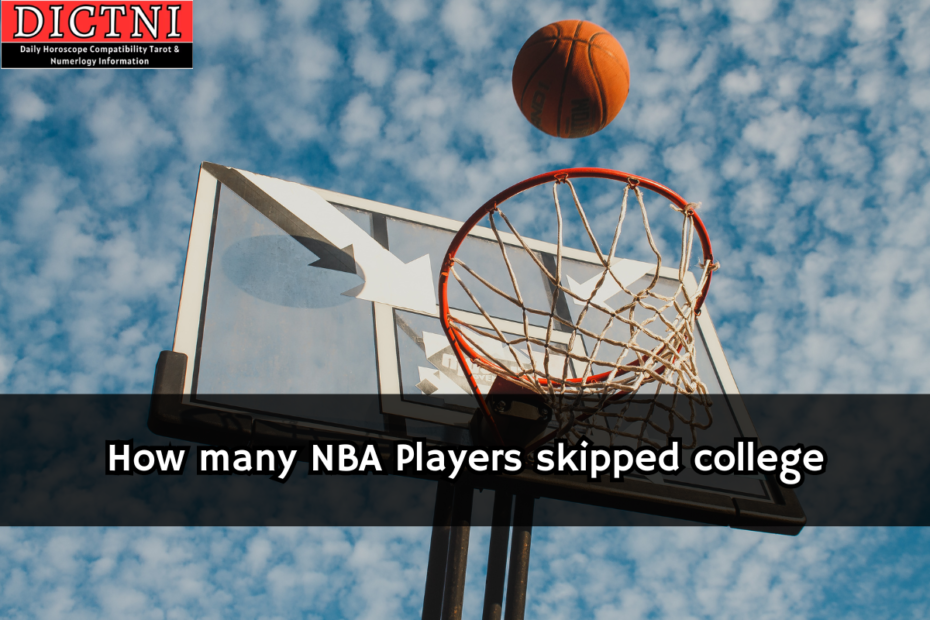Introduction
The traditional route to the National Basketball Association (NBA) is for gifted athletes to demonstrate their abilities in college before turning pro. But there is a special group of athletes that went straight to the NBA instead of attending college. In this piece, we explore the experiences of athletes who forwent college, looking at the variables that shaped their choices, the effects they had on the league, and the development of this unorthodox path to the NBA.
Historical Background
During a significant portion of the NBA’s initial history, players were usually recruited straight out of high school. But before players could enter the draft, they had to be at least 19 years old and a year out of high school, according to a 2006 NBA regulation. The purpose of this regulation was to incentivize athletes to invest more time honing their craft before to transitioning to the professional ranks.
A small number of players have managed to avoid going to college despite this regulation change. These players have either played overseas, joined post-high school leagues, or just declared for the NBA Draft without going to college.
The Forerunners
Moses Malone (1974): By forgoing college in favor of a professional career, Moses Malone blazed a new path. Before the ABA and NBA merged in 1976, he chose to play for the Utah Stars in the American Basketball Association (ABA). Malone’s smooth transition set the stage for other players to think about taking different routes to the NBA in the future.
Darryl Dawkins (1975): One of the first players to make the transition from high school to the NBA, Darryl Dawkins was well-known for his impressive dunks and endearing demeanor. After being selected in the 1975 NBA Draft by the Philadelphia 76ers, he had a successful playing career.
Bill Willoughby (1975): Bill Willoughby entered the NBA Draft immediately after high school, following in Dawkins’ footsteps. Another early example of a player forgoing college to pursue a professional career, he was selected by the Atlanta Hawks.
Achievement Stories
In addition to overcoming these obstacles, a few of players who forwent college have gone on to become legendary characters in the NBA. Their tales of achievement highlight the possible benefits of choosing an unusual route to the league:
Kevin Garnett (1995): One of the most successful players to forego college is generally agreed to be Kevin Garnett. The Minnesota Timberwolves selected Garnett fifth overall in the 1995 draft, and he had an instant impact on the game. He cleared the path for other high school athletes to become NBA players.
Kobe Bryant (1996): The future Hall of Famer Bryant entered the NBA Draft right out of high school and was chosen with the 13th overall choice by the Charlotte Hornets in 1996. The start of a remarkable career filled with many awards and titles was his move to the Los Angeles Lakers.
LeBron James (2003): Straight out of high school, LeBron James joined the NBA, quickly earning a reputation as one of the all-time great basketball players. LeBron, who was chosen by the Cleveland Cavaliers as the first overall pick in 2003, has had a significant impact on the league and has won numerous MVP honors and championships.
Dwight Howard (2004): In 2004, Dwight Howard, a center with a commanding presence, entered the NBA after graduating from high school. The Orlando Magic selected Howard first overall, and he went on to become a multiple All-Star and defensive stalwart for his teams.
The High School to NBA Pathway’s Evolution
High school athletes will be able to directly enter the NBA Draft in 2022 thanks to an agreement reached by the NBA and the National Basketball athletes Association (NBPA) to abolish the one-and-done restriction. This decision opens the door for gifted high school players to seek professional careers right now and represents a fundamental shift in the league’s approach to player eligibility.
The decision to do away with the one-and-done rule is a reflection of a wider understanding of how player development is evolving and the variety of routes players can take to become NBA players. It also fits with the NBA’s mission to provide up-and-coming players a chance to show off their abilities on the big stage.
Conclusion
The varied paths that sportsmen might take to become the best in professional basketball are exemplified by the tales of NBA players who forwent attending college. These players, who have challenged norms and rewritten the story of success, have left an enduring impression on the game. They range from early pioneers like Moses Malone to contemporary icons like LeBron James.
A new age for high school talent is heralded with the elimination of the one-and-done rule, as the NBA adjusts to the evolving landscape of player development. The NBA’s dedication to giving young players opportunities is a reflection of its innovative strategy to acquiring talent and its understanding that players’ paths to greatness in the league are as varied as they are.
